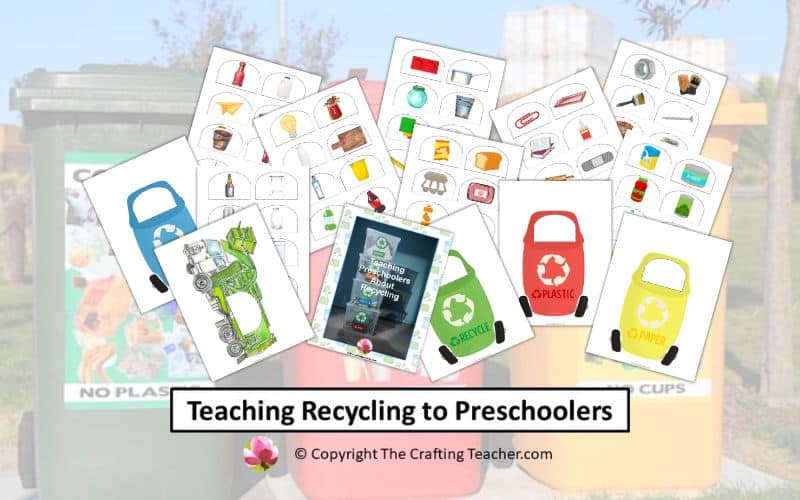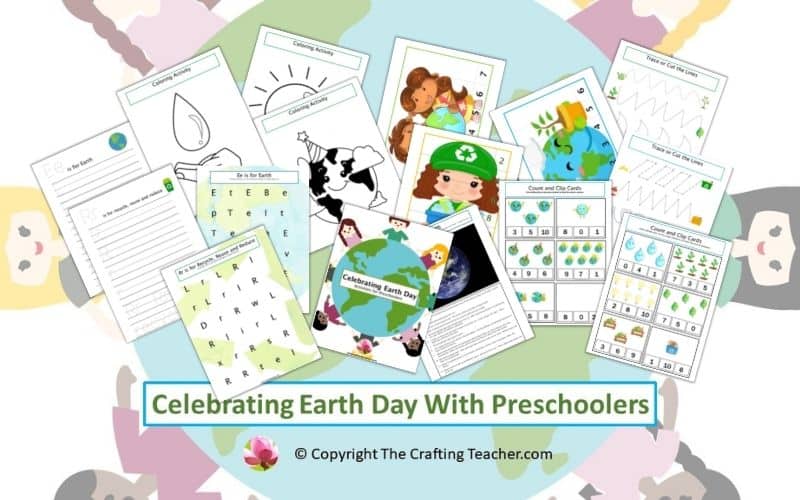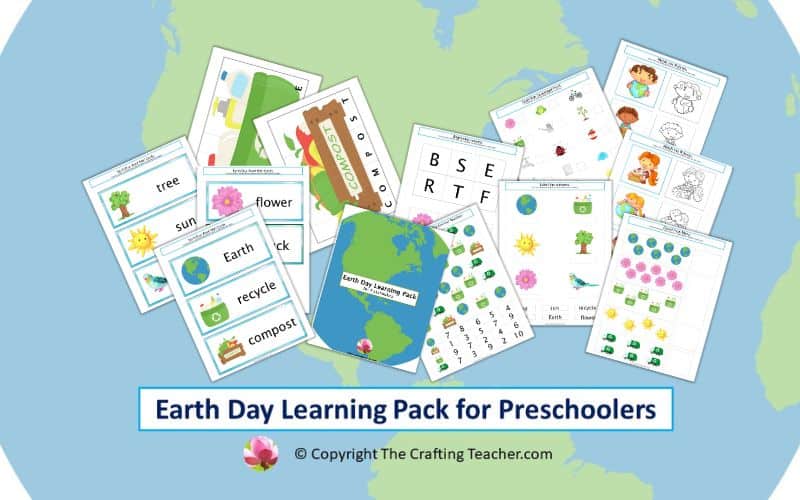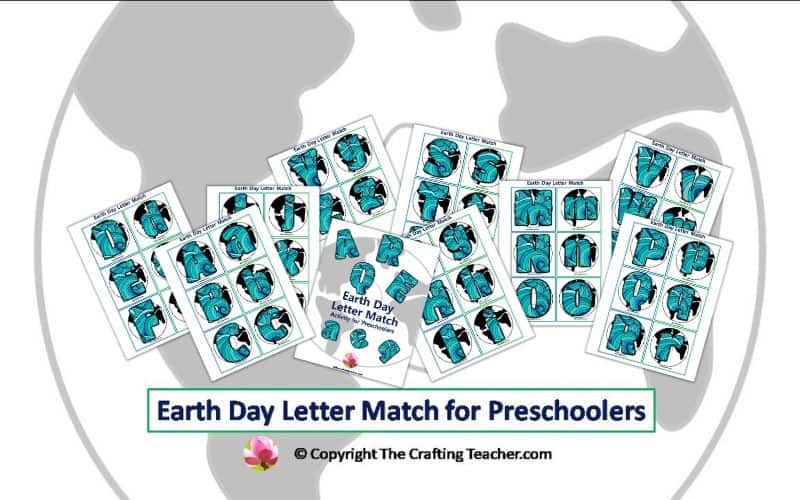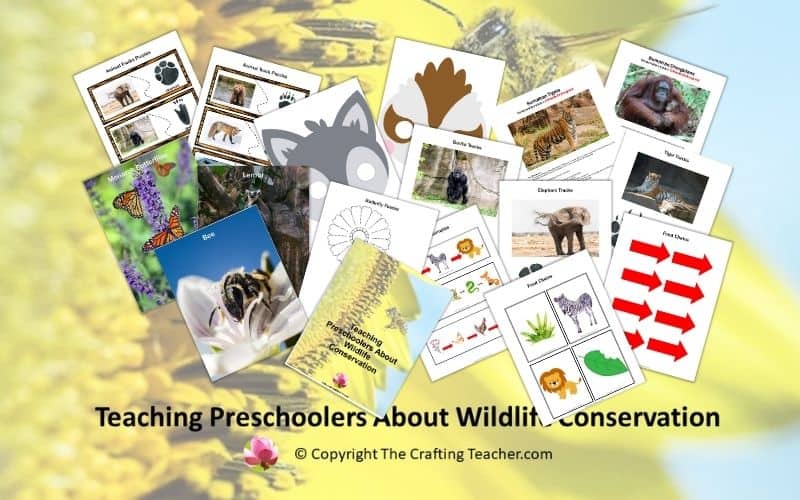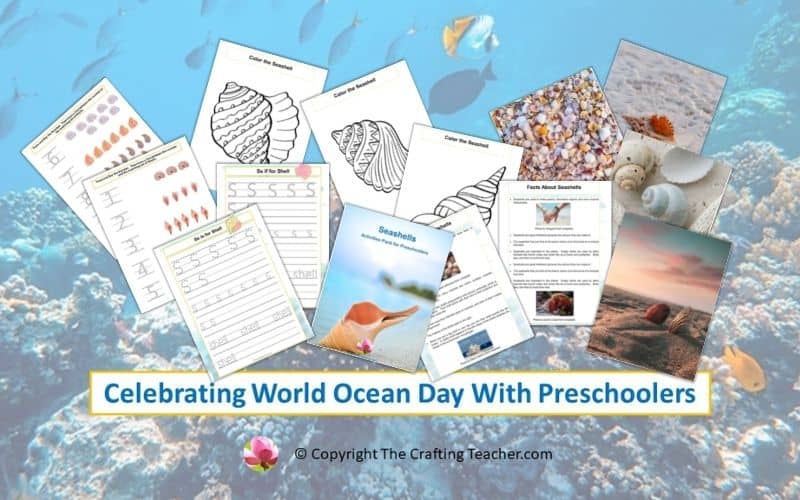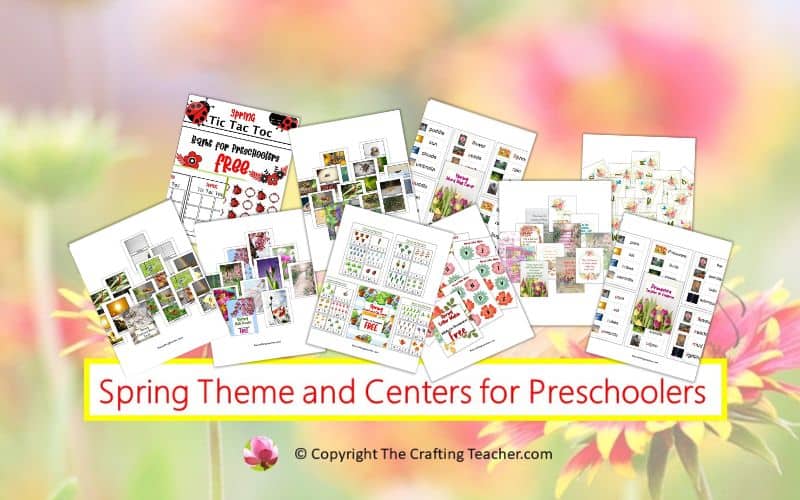Teaching Preschoolers About Recycling
Affiliate Disclosure: “This post contains affiliate links, which means I receive a small commission, at no extra cost to you, if you make a purchase using those links.”
Earth Day is April 22, and I think it is the perfect excuse to start teaching your preschoolers how to recycle, upcycle, and reuse if you haven’t started. This practice should be done every day, all year round, to plant in them good habits that will be carried throughout their entire lives.
Caring about the environment since your children are young, will make them more responsible adults, which could make a big difference in the future of our planet and all its inhabitants.
Dumping everything in a trashcan, leaving the water running for a long time, or leaving cans and bottles at the beach is very easy, right? But being conscious about the environment and observing practices to protect it is not that easy. It should become a habit in grated in ourselves to become a natural part of our lives and how we live it.
Unfortunately, that was not the case in the majority of humans across the world. That’s why our planet is screaming for help and we are losing tons of species. In other words, we are killing our home.
That is why we must teach our kids, the importance of recycling and how to do it correctly. It is not enough to show them which bin should be used for trash and which one for recycling materials. They need to learn other components such as cleaning the bottles before putting them in the recycling bin, which plastic can be recycled, and using reusable containers, thermos, and straws.
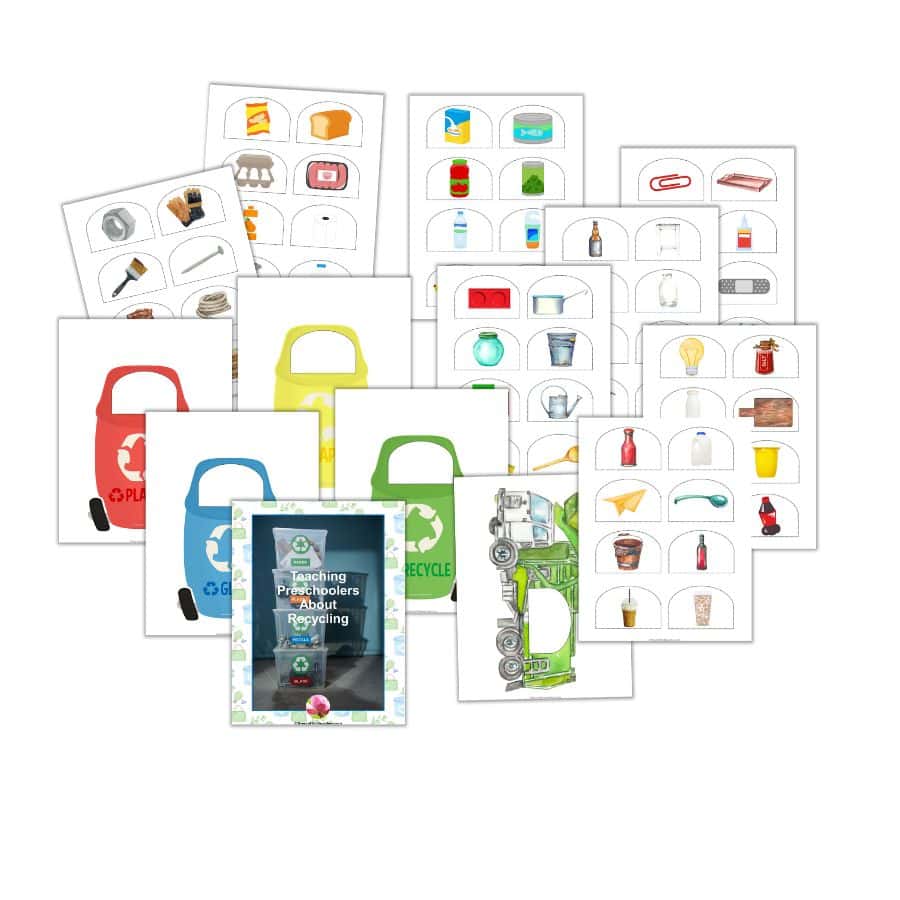
I have included a FREE 14-page long recycling sorting activities pack, which you can download at the end of this post.
Benefits of Teaching Recycling
Teaching our preschoolers how to recycle has multiple benefits, such as:
- Learn to Care About the Environment. For me, this is the most important one. As mentioned before, if our children become conscious of the importance to care of the planet and how to do it as a habit, they will do the same for their children, which hopefully will change the way humans act and avoid the practices that are damaging our home, before is too late.
- Improve Their Memory. Remembering what type of materials could be recycled, which practices should be avoided, and what to do in different situations will help them retain important information more easily for other aspects of their lives.
- Improve Fine Motor and Coordination Skills. Having to divide, recycle, and reuse materials involves the use of their hands and coordination to do the tasks involved in this process.
- Learn Science. Learning recycling also teaches our children about important scientific facts such as the different types of species and how they are connected, how climate change affects the ecosystems and its consequences, and where our food comes from.
- Improve Their Creativity. Thinking about how to reuse recycled materials in a different way to create art, for example, is a great way to develop their critical thinking and creativity.
- Involve Parents. Getting the parents involved in this process will provide your classroom with materials to work with if you create a drop-off station for cardboard tubes and boxes, plastic bottles, old kitchen utensils, clothes, etc. It will also make your parents remember the importance of recycling and encourage them to do the same at home.
Fun Activities to Teach Recycling
The only way we can successfully teach preschoolers how to recycle is to make it fun. When kids find activities boring and too difficult, they don’t pay attention and don’t want to participate.
Some of the activities you can do are:
- Create a recycling station. You can gather at least a couple of large bins, one for trash and another one for recycling materials. Involve the children in making signs with construction paper and drawings or stickers for each of the bins. Tape the signs on the bins, and educate children on using them appropriately.
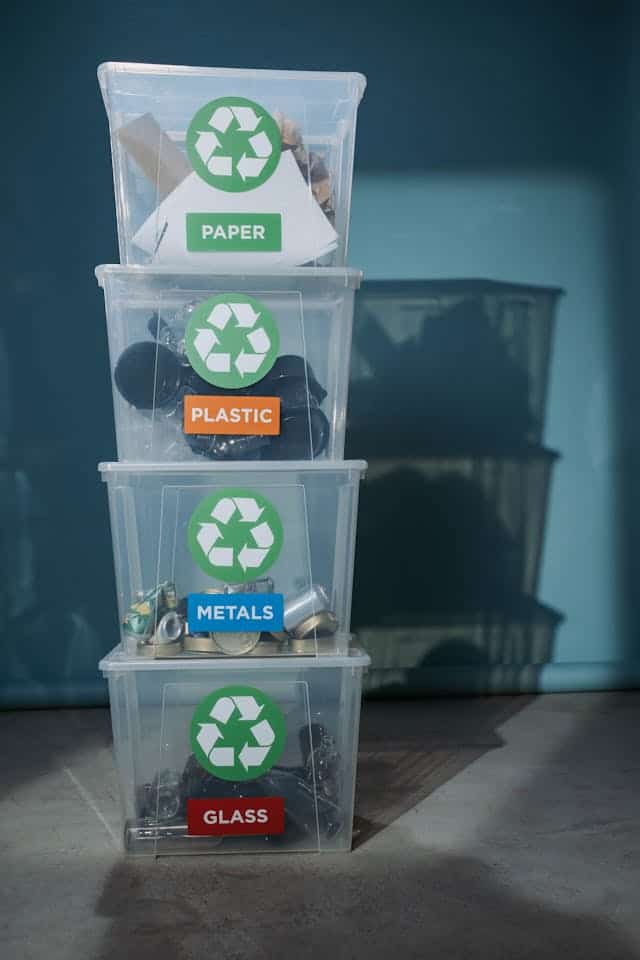
- Promote a donation campaign. You can have your children decorate a big box to collect donations, and invite your families to bring in clothes, shoes, purses, and other items that are in good condition, to be donated. It is a good way for families to participate and children to see that discarded items can be reused by someone who is in more need.
- Sorting and recycling. Once you create the recycling station, help your children sort materials according to the bins you created. For example, paper in the paper bin, plastic in the plastic bin, and so forth and so on. You can get your families involved by asking them to bring recycling items (boxes, toilet paper tubes, soda cans, plastic bottle caps, etc.), to have a nice variety of items to sort.
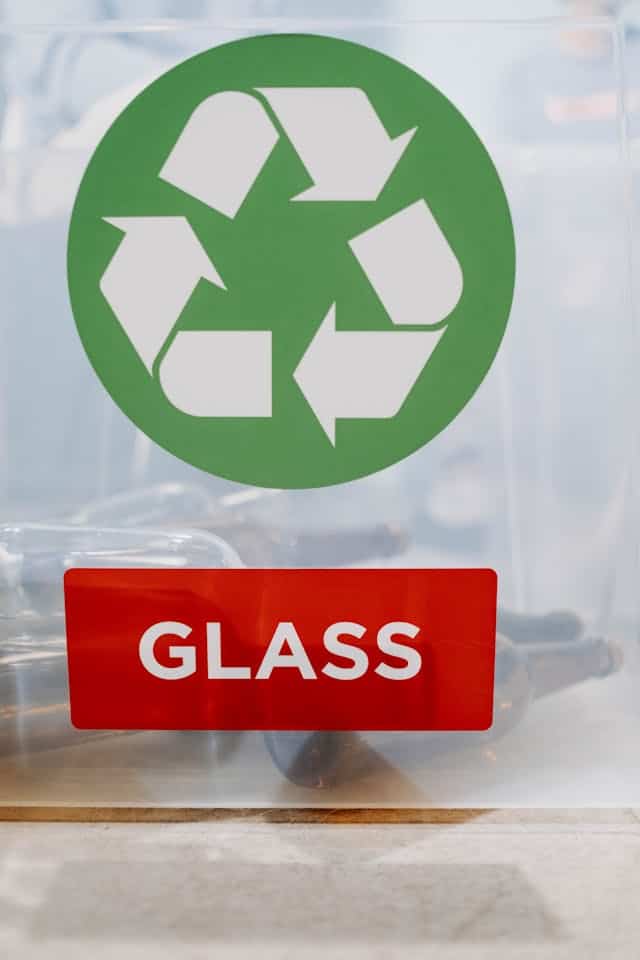
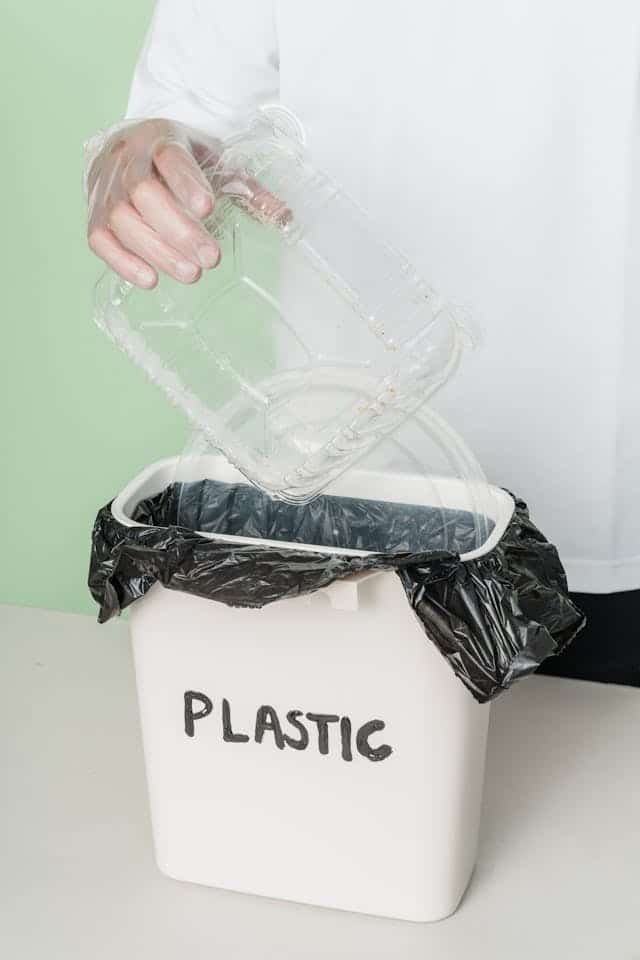
- Doing art with recycled materials. Include recycling materials such as newspapers, magazines, labels, boxes, plastic utensils, etc. in your art center, and let children use them to their heart content to create art.
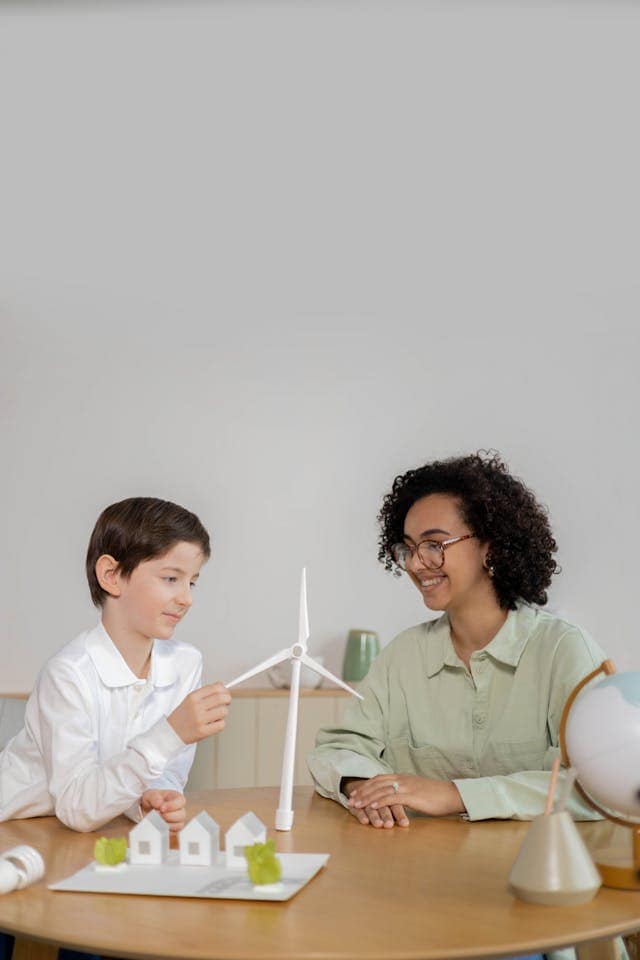
- Recycled stampers. You can create stampers with sponges, scraps vegetables and fruits, bottles, toilet paper tubes, etc., and invite the children to use them to make prints on paper with tempera paint.
- Create handmade puzzles. You can use the cover of cereal boxes, pictures of old calendars, and even cards. Glue them to a piece of cardstock, laminate them if you can, and cut them into puzzle pieces.
- Include used materials in your Block and Housekeeping areas. You can bring egg cartons, different boxes, plastic bottles, paper towels and toilet paper rolls, plastic cups, etc., and invite your children to use them during playtime in the Housekeeping Area or to create structures such as buildings and bridges in the Block Area.
- Create activities that involve reuse, reduce, and recycle. For example, you can also write letters on top of bottle cops and give them to the children to copy words, spell their names, count, sort them by colors and types, or make patterns. Or use toilet paper rolls or plastic plates, and have the children use honey and bird seeds to create bird feeders. Or provide cans, egg cartons, or small jars to make flower vases, planters, or seed starters. You can find tons of ideas on Pinterest and Buzzfeed.
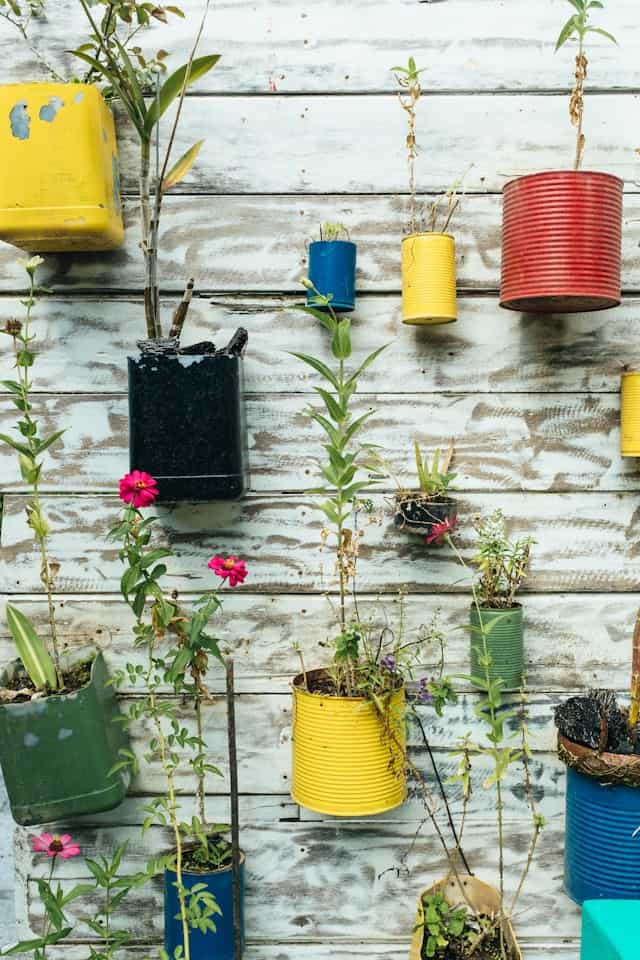
- Go on a field trip. Taking your preschoolers to a trash field or a recycling plant will help them see by themselves the amount of waste that it accumulated, and understand better the magnitude of this problem.
- Program a trash collection campaign. You can take your preschoolers to the beach or the park with their families, to collect any piece of trash you find and put them in trash bags.
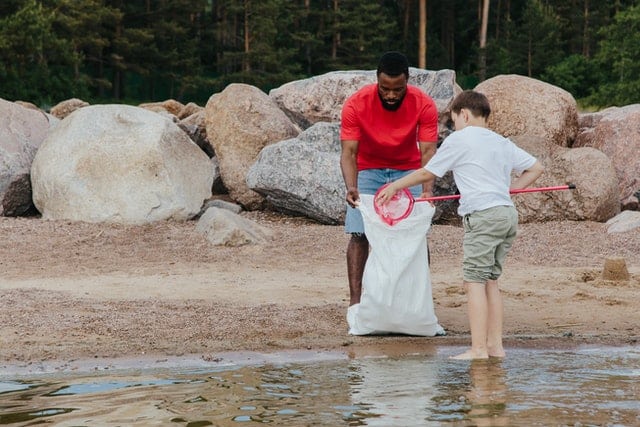

- Have your preschoolers watch videos about recycling. The best way to learn is by using all the senses, and YouTube has some interesting videos about this theme that your children can watch. For example, Recycling Plastic, Glass, and Paper Learn how to Reduce, Reuse, and Recycle, or Reduce, Reuse, Recycle – What can kids do?
- Sing songs with your kids. You can find some on YouTube, for example, Reduce Reuse Recycle Song, Reduce Reuse Recycle Song for Kids, and The Recycling Song for Kids.
- Start a garden. You can use vegetable and fruit scraps like the roots of seasoning plants such as cilantro and parsley, avocado, tomato, pumpkin seeds, or potato pieces to create new plants with your children.
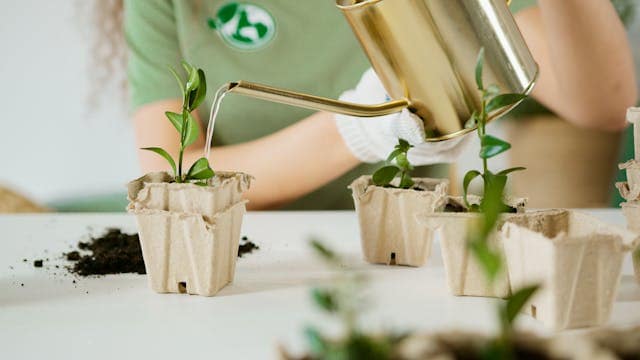
- Create special lesson plans. You can create lessons to educate your children about different related topics such as where the paper comes from and the consequences of deforestation, the damages that plastic causes to the ocean ecosystem, how to create a compost bin and benefits from it, what type of products and environmentally friendly, etc.
- Use photos of recyclable and non-recyclable items. You can then use these photos to explain to your preschoolers which items can be recycled or which cannot and why, and then use them to have your children decide and sort whether each item in the photos should go in the recycling bin or trash can.
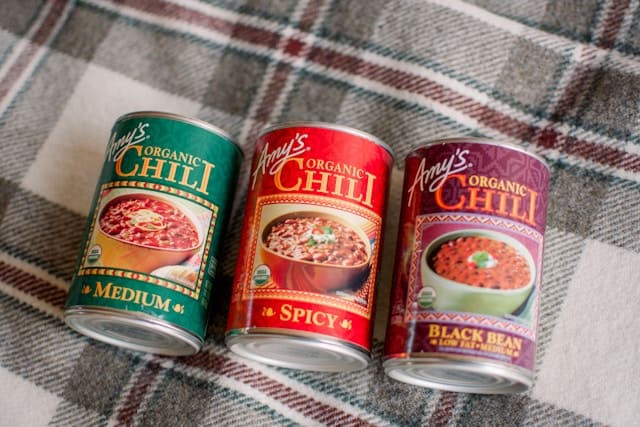
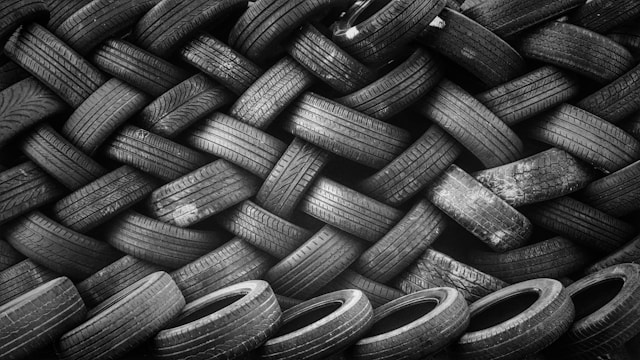
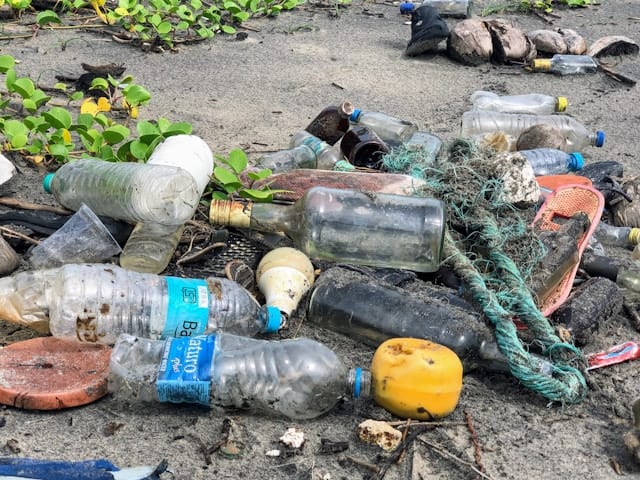
Other Ideas
You can find amazing ideas about recycling, reducing, and reusing on the internet. Below you are some of them:
Art
- Create a bird feeder using a plastic bottle from Natural Beach Living.
- Make a gift box using a recycled plastic bottle from Red Ted Art.
- Make new crayons melting pieces of old ones from Little Bins for Little Hands.
- Create masks from recyclable materials from Pickle Bums.
- Make egg carton bird masks from Blue Bird Wood.
- Try a milk carton pen pot Blue Bear Wood.
Math
- Reduce, reuse, and recycle sorting activity from Fluffy tots.
- Count using a recycling bin counting activity from JDaniel4’s Mom.
- Solve recycling truck number puzzles JDaniel4‘s Mom.
- Make a cardboard math learning board from Hello Wonderful.
Literacy
- Make recycled paper alphabet books from 123Homechool4Me.
- Sight word game with recycling cups from 123Homechool4Me.
- Crazy Roads sight word game from 123Homeschool4Me.
Science
- Gelatin bioplastic science project from Steam Powered Family.
- Paper versus plastic experiment from Teach Me Mommy.
- Earth Day recycling activity from A Little Pinch of Perfect.
- STEAM activities with recycled newspapers from Wise Owl Factory.
- Air, land, and water pollution from Natural Beach Living.
Books About Recycling
There are many books that you can use, both fictional and non-fictional. You can find some at your local library and used bookstore. I personally love Amazon because you can get anything fast. These are some books I like. I added my affiliate Amazon links to make it easier for you, just by clicking on the titles.
- Recycle! by Gail Gibbons. This educational book offers facts to explain the process of recycling from start to finish focusing on five different types of materials, paper, glass, aluminum cans, plastic, and polystyrene, and helpful tips for cleaning up our environment.
- Why Should I Recycle? by Jen Green. This story answers children’s questions about recycling using amusing color illustrations on every page, and includes a note for parents and teachers, suggesting ways to use these books most effectively.
- Reduce, Reuse, and Recycle with Liam, the Smart Rabbit by Azaliyah Schulz. From thrilling and adventurous to educational and engaging, this story follows Liam as he learns about plastic pollution. It will motivate and empower readers to reduce, reuse, and recycle to make our World a greener and cleaner place.
- The Life of a Little Cardboard Box by IglooBooks. This book introduces children to the magic of recycling and the profound impact it has on our world, through the journey of a cardboard box from its beginnings to its transformation into something new.
- My First Book About Reuse, Reduce, and Recycle by Duopress Labs. This is a beautiful introduction for children to the simple steps we can all take to help the environment while helping them develop a connection with the natural world.
- Recycling is Fun by Charles Ghigna. Children will learn that sorting recycling and giving new life to old things could be fun and will help the environment
Pin It For Later
If you are in a rush and don’t have time to read the post and download the printable but want to save it for later, pin it to one of your Pinterest boards.

I hope you enjoy these ideas, and help you have fun explaining to your kiddos about recycling and its purpose. To get the FREE pack, you just have to click on the link below and put your information, for an immediate download.
Be happy, safe, and creative. I wish you well.
Love,

P.D. Please let me know if any of these ideas worked for you, and, if you have others, I would love to hear them. There’s no such thing as doing too much to save our planet.

